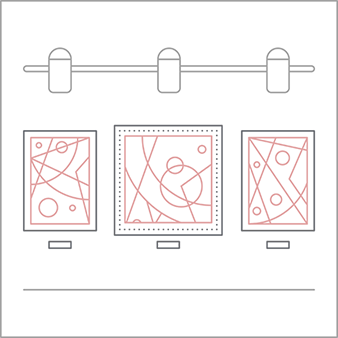Frans Smit: Something Old, Something New
We are thrilled to unveil the highly anticipated exhibition, "Something Old Something New," by the artist Frans Smit. This exhibition explores how Art techniques from the past hold historical significance as they reflect the cultural, social, and artistic practices of different periods. Studying and practising these techniques allows us to understand and appreciate the artistic traditions and legacies that have shaped the art world.
In our current society where we are overwhelmed with visual content on social media, we often become desensitised by the sheer volume of images. As we scroll through endless feeds, our attention spans tend to become shorter, and we may skim over artworks without giving them the time and contemplation they deserve. This can result in a superficial engagement with artwork, focusing more on the immediate visual impact rather than a deeper exploration of its meaning, context, and artistic intent. The advent of AI image generation also raises ethical questions about human creativity. In this context, Smit's work serves as a powerful reminder of the significance of painting. Through its tactility, uniqueness, and ability to evoke emotion, painting rekindles our appreciation for the genuine and profound artistic experience.
When we consider EuropeвҖҷs past, we need to acknowledge its dark history of colonialism, slavery, and in South Africa apartheid. However, it is important to recognise that Europe has also contributed greatly to the realms of literature, music, science, architecture, and art. While some may want to erase the past, we can strive to learn from its mistakes and build upon its strengths.
Smit aims to focus on the traditions of the technique of painting. вҖҳSomething OldвҖҷ pays homage to the skilled craftsmanship of the Dutch, Flemish and Italian painters between the Renaissance and Baroque eras of the 15th and 17th centuries. вҖҳSomething NewвҖҷ incorporates modern-day techniques incorporating impasto, sharp flat plains of colour and spray paint. These techniques developed in the 20th century gave rise to the expressionist and modernist movements.

Recommended for you
We are thrilled to unveil the highly anticipated exhibition, "Something Old Something New," by the artist Frans Smit. This exhibition explores how Art techniques from the past hold historical significance as they reflect the cultural, social, and artistic practices of different periods. Studying and practising these techniques allows us to understand and appreciate the artistic traditions and legacies that have shaped the art world.
In our current society where we are overwhelmed with visual content on social media, we often become desensitised by the sheer volume of images. As we scroll through endless feeds, our attention spans tend to become shorter, and we may skim over artworks without giving them the time and contemplation they deserve. This can result in a superficial engagement with artwork, focusing more on the immediate visual impact rather than a deeper exploration of its meaning, context, and artistic intent. The advent of AI image generation also raises ethical questions about human creativity. In this context, Smit's work serves as a powerful reminder of the significance of painting. Through its tactility, uniqueness, and ability to evoke emotion, painting rekindles our appreciation for the genuine and profound artistic experience.
When we consider EuropeвҖҷs past, we need to acknowledge its dark history of colonialism, slavery, and in South Africa apartheid. However, it is important to recognise that Europe has also contributed greatly to the realms of literature, music, science, architecture, and art. While some may want to erase the past, we can strive to learn from its mistakes and build upon its strengths.
Smit aims to focus on the traditions of the technique of painting. вҖҳSomething OldвҖҷ pays homage to the skilled craftsmanship of the Dutch, Flemish and Italian painters between the Renaissance and Baroque eras of the 15th and 17th centuries. вҖҳSomething NewвҖҷ incorporates modern-day techniques incorporating impasto, sharp flat plains of colour and spray paint. These techniques developed in the 20th century gave rise to the expressionist and modernist movements.












